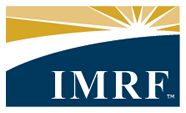Commingled IMRF/Social Security funds with no internal tracking
IMRF levied taxes can only be used for IMRF purposes. When IMRF and Social Security are being commingled in the same cash account with no separate accounting it may be subsequently determined that the entire cash balance of the commingled fund is IMRF levied funds, while Social Security has a deficit. Therefore, IMRF tax levy proceeds may be funding the Social Security deficit which is prohibited by the Pension Code.
Click here to see the Authorized Agent Manual guidelines about this topic.
Enrollment and Termination
After reviewing payroll records, we might conclude that:
- Employees working more than the 1,000/600 hourly standard are not enrolled in IMRF. These employees are required to be enrolled.
- IMRF members are working in positions requiring less than the 1,000/600 standard hours. These employees must be removed from participation.
Click here to see the Authorized Agent Manual guidelines and best practices about these topics.
Reporting optional wages without resolution
Optional wages have been included in employer payroll and reported to IMRF as earnings without the appropriate resolution on file. An employer may elect, by governing body resolution, to report these optional wages as IMRF earnings. Until a proper resolution is filed, these wages should not be reported. More information about Employer Optional Wage Reporting.
Click here to read the Authorized Agent Manual guidelines about this topic.
Employer paid IMRF member contributions
If the employer chooses to pay all or part of the member contribution, those “employer-paid member contributions” are considered a salary increase, or a raise, to the member. To determine a member’s IMRF earnings if the employer pays all of the member’s IMRF contribution, divide the base salary (the member’s salary before the employer-paid contributions are added to it) by a factor .955. The employer cannot use funds from the IMRF tax levy to pay these contributions.
Click here to read the Authorized Agent Manual guidelines about this topic.
Failure to report wages from multiple positions
If an employee works in more than one position for one unit of government, whether the hours of all his or her jobs may be combined when applying the hourly standard depends on what types of positions the employee holds. Service in two or more regular, non-elected positions may be combined to meet the hourly standard. This includes non-governing body appointed positions. These positions are the only ones that may be combined in order to meet the hourly standard. We might conclude that the hours for all jobs should be reported to IMRF.
Retirement box not checked on W-2
Check Box 13 for any employee who is participating in IMRF or eligible to participate in IMRF. “Eligible to participate” means that employers should also check this box for elected officials and city hospital workers who are eligible, but elect not to participate with IMRF. The IRS considers these employees as being covered by a pension plan since they had an option to participate. (Refer to IRS Publication 590-A, “Individual Retirement Arrangements [IRAs].”)
Click here for the IMRF Tax and Topic letter No.17.
Incorrect earnings for IMRF purposes
Please review the IMRF Manual for Authorized Agents to verify you are correctly reporting wages based on wage type.
Click here to read the definition of IMRF Earnings in the Illinois Pension Code.
Retirees who return to work
Retirees and employers can face serious financial consequences if they don’t follow the laws that apply to receiving a public pension while working for a public sector employer. More information on the cautions of hiring IMRF retirees. They must call IMRF if they plan on working for any IMRF employer after they begin receiving their IMRF pension -- even as an independent contractor. Employers should contact IMRF at (800) 728-7971 before you hire an IMRF retiree.
Click here to read the return-to-work requirements of the Illinois Pension Code.

